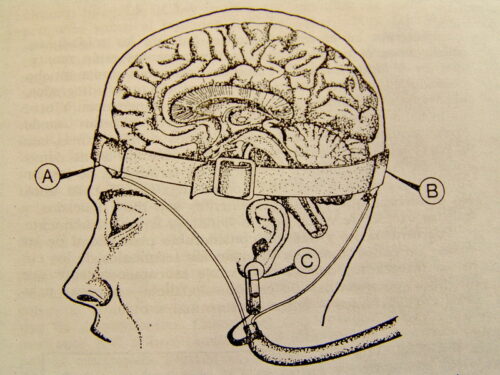Image Courtesy of Flickr.
In 6,000 B.C.E., North African physicians treated head ailments with trephination—the practice of drilling holes into patients’ skulls without anesthesia. Luckily, modern-day trepanning is much less invasive. A research team in Geneva, Switzerland is employing flexible, biocompatible materials in electrocorticography (ECoG), the monitoring of electrical activity associated with the brain. Normally, to detect the brain’s signals, neurosurgeons must carve out a ten-square-centimeter section of the skull and insert electrodes through the hole, positioning them on the surface of the cerebral cortex. By creating a new soft, deployable ECoG system, the team has revolutionized neural recording by minimizing risks of infection and brain damage that accompany the removal of a large section of the skull.
The novel soft ECoG system is composed of six spiral-shaped, folded arms that form a cylindrical “electrode array,” which extends through a one-square-centimeter incision in the skull. The system works by administering fluidic pressure into each arm, causing the arms to slowly expand within the one-millimeter space between the skull and the brain’s surface. Each component of the array is embedded with strain sensors, which monitor the deployment of the soft arms and tell the user when to stop applying pressure.
In an in vivo experiment performed on a miniature pig, the soft robotic electrodes yielded successful readings of sensory activity and did not cause any structural damage. Thus, ECoG could play a large role in mapping regions of the brain associated with epilepsy, recording the brain’s functions, and controlling the movement of prosthetic limbs. Further advances are still necessary, but soft robotics demonstrate extraordinary capabilities in laying the groundwork for these advancements.

